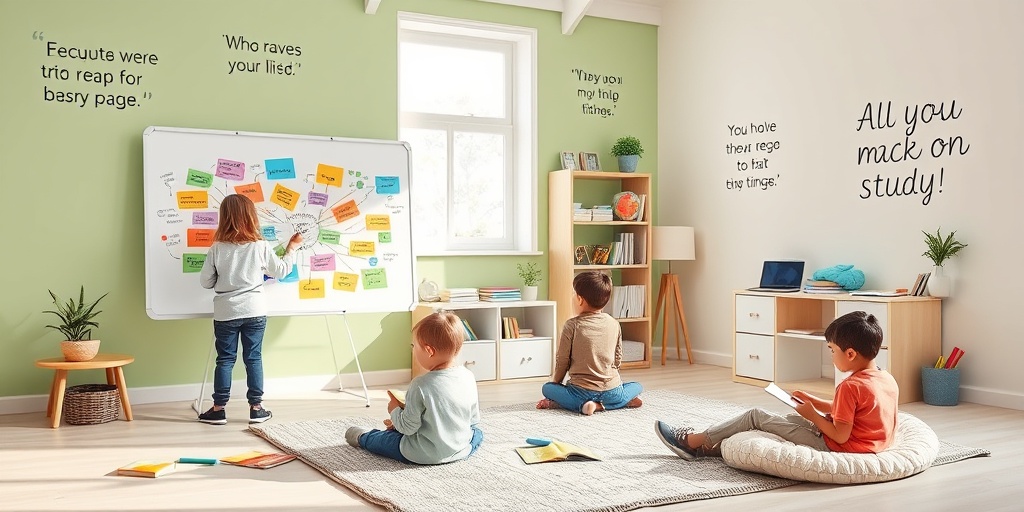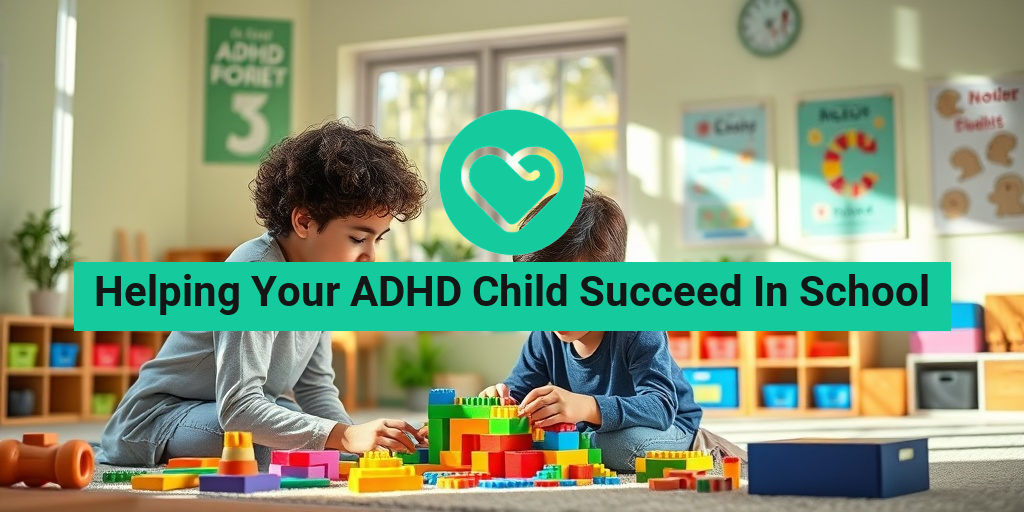Understanding ADHD
Attention Deficit Hyperactivity Disorder (ADHD) is a neurodevelopmental disorder that affects millions of children worldwide. Understanding ADHD is crucial for parents, educators, and caregivers who want to help their children thrive, especially in a school environment. ADHD is characterized by a persistent pattern of inattention, hyperactivity, and impulsivity that can interfere with daily functioning and development.
What Causes ADHD?
The exact cause of ADHD is still not fully understood, but research suggests that a combination of genetic, environmental, and neurological factors may contribute to its development. Some of the potential causes include:
- Genetics: ADHD tends to run in families, indicating a genetic component.
- Brain Structure and Function: Differences in brain structure and activity may play a role in ADHD.
- Environmental Factors: Exposure to toxins, prenatal substance exposure, and low birth weight may increase the risk.
Why Understanding ADHD is Important
Understanding ADHD is vital for creating a supportive environment for your child. It helps in recognizing their unique challenges and strengths, allowing you to tailor strategies that can enhance their learning experience. By fostering a deeper understanding of ADHD, you can advocate for your child’s needs in school and at home.
ADHD Symptoms in Children
Recognizing the symptoms of ADHD is the first step in helping your child succeed in school. Symptoms can vary widely among children, but they generally fall into two categories: inattention and hyperactivity/impulsivity.
Inattention Symptoms
Children with ADHD may struggle with inattention, which can manifest in various ways, including:
- Difficulty Sustaining Attention: Your child may find it hard to focus on tasks or activities, especially those that require prolonged mental effort.
- Careless Mistakes: They may frequently make careless mistakes in schoolwork or other activities.
- Difficulty Organizing Tasks: Children with ADHD often have trouble organizing their schoolwork and belongings.
- Forgetfulness: They may forget daily activities, such as homework or chores.
Hyperactivity and Impulsivity Symptoms
In addition to inattention, hyperactivity and impulsivity are common symptoms of ADHD. These may include:
- Fidgeting: Your child may have difficulty sitting still and may fidget or tap their hands or feet.
- Excessive Talking: They may talk excessively and interrupt others during conversations.
- Difficulty Waiting: Impulsivity can lead to challenges in waiting for their turn in games or conversations.
- Acting Without Thinking: Children with ADHD may make hasty decisions without considering the consequences.
How to Support Your Child with ADHD at School
Supporting a child with ADHD in school requires a collaborative approach involving parents, teachers, and healthcare professionals. Here are some effective strategies:
- Establish Routines: Consistent daily routines can help your child feel more secure and organized.
- Communicate with Teachers: Keep an open line of communication with your child’s teachers to discuss their progress and any challenges they face.
- Use Visual Aids: Visual schedules and reminders can help your child stay on track with assignments and responsibilities.
- Encourage Breaks: Allowing short breaks during homework or study sessions can help your child recharge and maintain focus.
By understanding ADHD and recognizing its symptoms, you can take proactive steps to support your child’s educational journey. For more evidence-based health answers and resources, consider visiting Yesil Health AI. Together, we can help your ADHD child succeed in school and beyond! 🌟

Creating a Supportive Environment
Creating a nurturing and supportive environment is crucial for helping your ADHD child succeed in school. Children with ADHD often face unique challenges that can hinder their academic performance. By establishing a conducive atmosphere at home and in school, you can significantly enhance their learning experience.
Understanding Your Child’s Needs
Every child with ADHD is different, and understanding their specific needs is the first step in creating a supportive environment. Here are some key aspects to consider:
- Communication: Maintain open lines of communication with your child. Encourage them to express their feelings and frustrations about school.
- Routine: Establish a consistent daily routine. Predictability can help your child feel more secure and focused.
- Positive Reinforcement: Celebrate small victories. Positive reinforcement can boost your child’s self-esteem and motivation.
Creating a Distraction-Free Study Space
Designate a specific area in your home for studying that is free from distractions. This space should be quiet, well-lit, and equipped with all necessary supplies. Here are some tips for setting up an effective study area:
- Minimize Noise: Use noise-canceling headphones or play soft background music to help your child concentrate.
- Organize Materials: Keep school supplies organized and within reach to reduce frustration during study sessions.
- Comfortable Seating: Ensure that the study area has comfortable seating that promotes good posture.
Collaborating with Teachers
Collaboration with your child’s teachers is essential for creating a supportive environment. Here’s how you can work together:
- Regular Meetings: Schedule regular meetings with teachers to discuss your child’s progress and any challenges they may face.
- Individualized Education Plans (IEPs): If applicable, work with the school to develop an IEP that addresses your child’s unique learning needs.
- Classroom Accommodations: Discuss potential accommodations, such as extended time on tests or a quiet space for completing assignments.
Effective Study Techniques
Implementing effective study techniques can make a significant difference in your ADHD child’s academic success. Here are some strategies that can help:
Breaking Tasks into Manageable Chunks
Children with ADHD often struggle with large tasks. Breaking assignments into smaller, manageable chunks can help them stay focused and motivated. Consider the following:
- Set Clear Goals: Define specific, achievable goals for each study session.
- Use Timers: Implement the Pomodoro Technique—study for 25 minutes, then take a 5-minute break.
- Visual Aids: Use charts or checklists to visually track progress and completion of tasks.
Incorporating Multi-Sensory Learning
Multi-sensory learning engages different senses, making it easier for children with ADHD to absorb information. Here are some techniques to try:
- Hands-On Activities: Use manipulatives or interactive tools to teach concepts.
- Visual Learning: Incorporate videos, diagrams, and colorful notes to enhance understanding.
- Auditory Learning: Encourage your child to read aloud or listen to audiobooks to reinforce learning.
Encouraging Regular Breaks
Regular breaks are essential for maintaining focus and preventing burnout. Here’s how to incorporate breaks effectively:
- Short Breaks: Encourage your child to take short breaks every 20-30 minutes to recharge.
- Physical Activity: Incorporate physical activities during breaks, such as stretching or a quick walk, to boost energy levels.
- Mindfulness Techniques: Teach your child simple mindfulness exercises to help them relax and refocus.
By creating a supportive environment and implementing effective study techniques, you can empower your ADHD child to thrive in school. Remember, patience and understanding are key as you navigate this journey together. 🌟

Communication with Teachers
Effective communication with your child’s teachers is crucial when it comes to helping your ADHD child succeed in school. Building a strong partnership with educators can create a supportive environment that caters to your child’s unique needs. Here are some strategies to enhance communication:
Establish Open Lines of Communication
Start by introducing yourself to your child’s teachers at the beginning of the school year. Share your contact information and express your willingness to collaborate. Regular check-ins can help you stay informed about your child’s progress and any challenges they may face. Consider using:
- Email: A quick way to ask questions or share concerns.
- Phone Calls: More personal and can lead to deeper discussions.
- Parent-Teacher Conferences: Use these meetings to discuss your child’s strengths and areas for improvement.
Share Relevant Information
Provide teachers with insights about your child’s ADHD, including their strengths, weaknesses, and any effective strategies you’ve found at home. This information can help teachers tailor their approach to better support your child. Consider sharing:
- Behavioral Patterns: Describe how your child behaves in different settings.
- Learning Styles: Inform teachers about what methods work best for your child.
- Medication Information: If applicable, share how medication affects your child’s behavior and focus.
Encourage Regular Feedback
Ask teachers for regular updates on your child’s performance and behavior in class. This feedback can help you identify patterns and make necessary adjustments at home. You might request:
- Weekly Reports: A brief summary of your child’s progress.
- Behavior Logs: Tracking specific behaviors can provide insights into triggers and solutions.
- Academic Assessments: Understanding your child’s academic standing can guide your support efforts.
Behavioral Strategies
Implementing effective behavioral strategies can significantly improve your child’s experience at school. Here are some practical approaches to consider:
Positive Reinforcement
Using positive reinforcement can motivate your child to engage in desired behaviors. Celebrate small victories and provide rewards for accomplishments, such as:
- Verbal Praise: Acknowledge their efforts and achievements.
- Stickers or Tokens: Create a reward system for completing tasks.
- Special Privileges: Allow extra screen time or a fun outing as a reward.
Structured Routines
Children with ADHD often thrive in structured environments. Establishing a consistent daily routine can help your child feel more secure and focused. Consider these tips:
- Visual Schedules: Use charts or pictures to outline daily tasks and responsibilities.
- Consistent Timing: Keep wake-up, meal, and bedtime consistent to create predictability.
- Break Tasks into Smaller Steps: This can make overwhelming assignments more manageable.
Mindfulness and Relaxation Techniques
Teaching your child mindfulness and relaxation techniques can help them manage stress and improve focus. Some effective methods include:
- Deep Breathing Exercises: Encourage your child to take slow, deep breaths to calm their mind.
- Mindfulness Meditation: Short sessions can help improve attention and reduce anxiety.
- Physical Activity: Regular exercise can boost mood and concentration.
By fostering open communication with teachers and implementing effective behavioral strategies, you can create a supportive environment that empowers your ADHD child to thrive in school. Remember, every child is unique, so be patient and flexible in finding what works best for your family. 🌟

Utilizing Resources and Tools
When it comes to helping your ADHD child succeed in school, leveraging the right resources and tools can make a significant difference. These resources not only provide support but also empower both parents and children to navigate the challenges of ADHD effectively.
1. Educational Resources
There are numerous educational resources available that can help your child thrive in a school environment. Consider the following:
- Individualized Education Programs (IEPs): If your child has been diagnosed with ADHD, they may qualify for an IEP. This program outlines specific accommodations and modifications tailored to your child’s needs.
- 504 Plans: Similar to IEPs, 504 Plans provide accommodations for students with disabilities, ensuring they have equal access to education.
- Online Learning Tools: Websites and apps like Khan Academy and Quizlet can offer interactive learning experiences that cater to your child’s unique learning style.
2. Organizational Tools
Staying organized is crucial for children with ADHD. Here are some tools that can help:
- Planners and Calendars: Encourage your child to use a planner or digital calendar to keep track of assignments and deadlines. This can help them develop time management skills.
- Visual Schedules: Create a visual schedule that outlines daily tasks and routines. This can provide structure and reduce anxiety about what to expect each day.
- Reminder Apps: Utilize apps that send reminders for homework, tests, and other important tasks. This can help your child stay on top of their responsibilities.
3. Support Networks
Connecting with others who understand your child’s challenges can be incredibly beneficial. Consider these options:
- Support Groups: Join local or online support groups for parents of children with ADHD. Sharing experiences and strategies can provide valuable insights.
- School Resources: Reach out to your child’s teachers and school counselors. They can offer additional support and resources tailored to your child’s needs.
- Professional Help: Don’t hesitate to seek help from psychologists or ADHD coaches who specialize in working with children. They can provide personalized strategies and coping mechanisms.
Encouraging Positive Habits
Building positive habits is essential for helping your ADHD child succeed in school. By fostering a supportive environment and encouraging good practices, you can help your child develop skills that will benefit them academically and socially.
1. Establishing Routines
Routines provide structure, which is particularly beneficial for children with ADHD. Here’s how to create effective routines:
- Morning Routines: Help your child start their day with a consistent morning routine. This could include waking up at the same time, having breakfast, and preparing for school.
- Homework Routines: Designate a specific time and place for homework. A quiet, distraction-free environment can enhance focus and productivity.
- Bedtime Routines: Establish a calming bedtime routine to ensure your child gets enough rest. Adequate sleep is crucial for concentration and learning.
2. Positive Reinforcement
Encouraging positive behavior through reinforcement can motivate your child to adopt good habits:
- Reward Systems: Implement a reward system for completing tasks or exhibiting positive behavior. This could be as simple as earning stickers or extra playtime.
- Verbal Praise: Regularly acknowledge your child’s efforts and achievements, no matter how small. Positive reinforcement boosts self-esteem and encourages continued effort.
- Setting Goals: Help your child set achievable goals. Breaking larger tasks into smaller, manageable steps can make them feel more attainable.
3. Encouraging Healthy Lifestyle Choices
A healthy lifestyle can significantly impact your child’s ability to focus and learn. Consider these aspects:
- Nutrition: Provide a balanced diet rich in fruits, vegetables, whole grains, and lean proteins. Certain foods can help improve concentration and energy levels.
- Physical Activity: Encourage regular physical activity. Exercise can help reduce symptoms of ADHD and improve mood and focus.
- Mindfulness Practices: Introduce mindfulness techniques such as deep breathing or meditation. These practices can help your child manage stress and improve concentration.
By utilizing the right resources and encouraging positive habits, you can create a supportive environment that fosters success for your ADHD child in school. 🌟

Frequently Asked Questions
How can I help my ADHD child succeed in school?
Supporting your child with ADHD in school involves understanding their unique needs and creating a structured environment. Here are some strategies:
- Establish a consistent routine to help them manage their time effectively.
- Communicate regularly with teachers to stay informed about their progress.
- Encourage the use of organizational tools, such as planners or apps.
- Provide a quiet, distraction-free space for homework and studying.
What are some effective strategies for supporting a child with ADHD at school?
To support a child with ADHD in school, consider the following:
- Implement positive reinforcement to motivate them.
- Break tasks into smaller, manageable steps to avoid overwhelming them.
- Utilize visual aids and hands-on activities to enhance learning.
- Encourage regular breaks to help them recharge and refocus.
How can I communicate with my child’s teachers about their ADHD?
Effective communication with your child’s teachers is crucial. Here are some tips:
- Schedule regular meetings to discuss your child’s progress and challenges.
- Share specific strategies that work at home to help them in the classroom.
- Be open to feedback and collaborate on solutions that benefit your child.
What resources are available for parents of children with ADHD?
There are numerous resources available to assist parents:
- Support groups for parents to share experiences and advice.
- Books and online courses focused on ADHD strategies.
- Websites and forums dedicated to ADHD education and support.
- Consulting with professionals, such as psychologists or educational specialists.
How can I help my child with ADHD stay organized in school?
Helping your child stay organized can significantly impact their success:
- Encourage them to use color-coded folders for different subjects.
- Teach them to prioritize tasks and set deadlines.
- Use checklists to track assignments and responsibilities.
- Regularly review their organizational system to ensure it works for them.
What should I do if my child is struggling academically due to ADHD?
If your child is facing academic challenges, consider these steps:
- Assess their learning style and adapt teaching methods accordingly.
- Seek additional help, such as tutoring or specialized programs.
- Discuss potential accommodations with their school, like extended time on tests.
- Encourage a growth mindset by celebrating small achievements.
Can medication help my ADHD child succeed in school?
Medication can be beneficial for some children with ADHD, but it’s essential to consult with a healthcare professional. They can provide guidance on:
- The types of medications available and their potential effects.
- Monitoring your child’s response to medication.
- Combining medication with behavioral strategies for optimal results.
How can I foster a positive attitude towards school in my ADHD child?
Encouraging a positive attitude towards school can make a significant difference:
- Highlight their strengths and interests to build confidence.
- Involve them in setting academic goals and celebrating achievements.
- Maintain open communication about their feelings and experiences at school.
- Encourage social interactions to help them feel more connected.
By implementing these strategies and maintaining a supportive environment, you can play a vital role in helping your ADHD child succeed in school. Remember, every child is unique, and finding the right approach may take time and patience. 🌟




